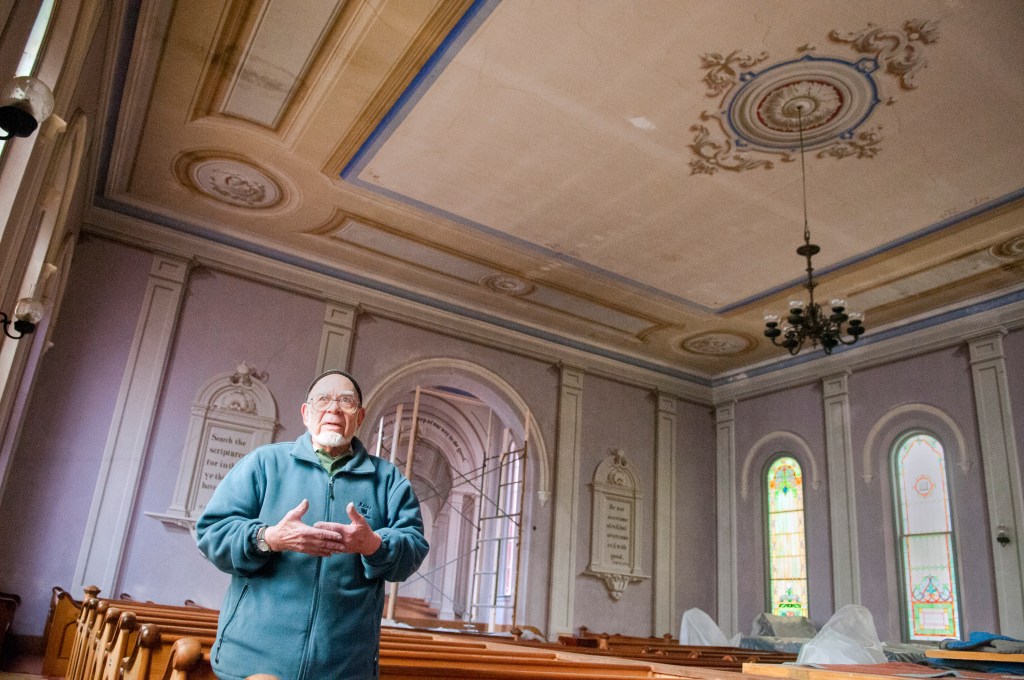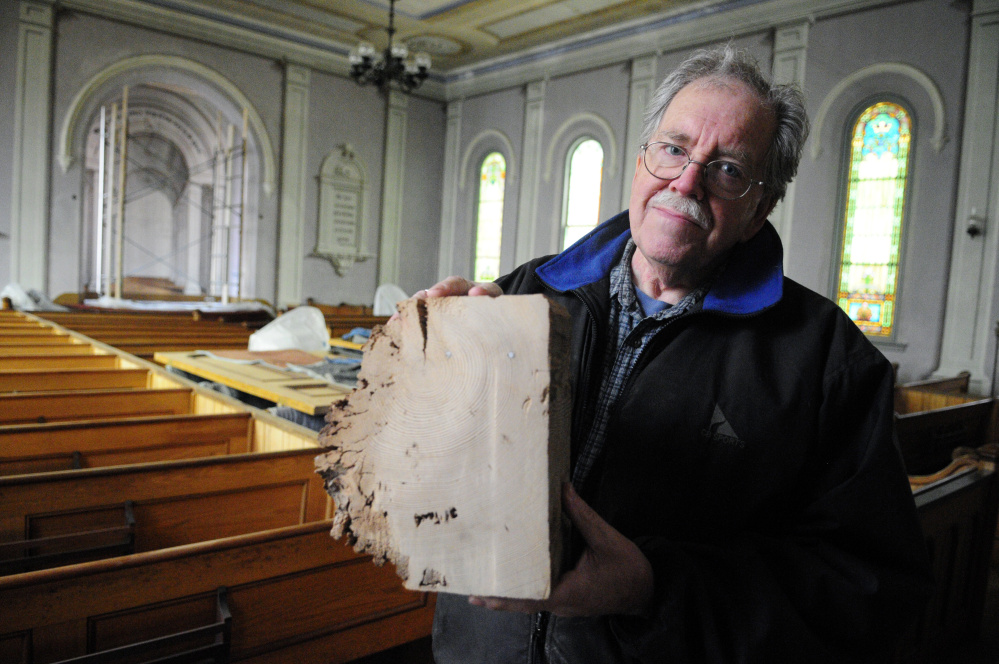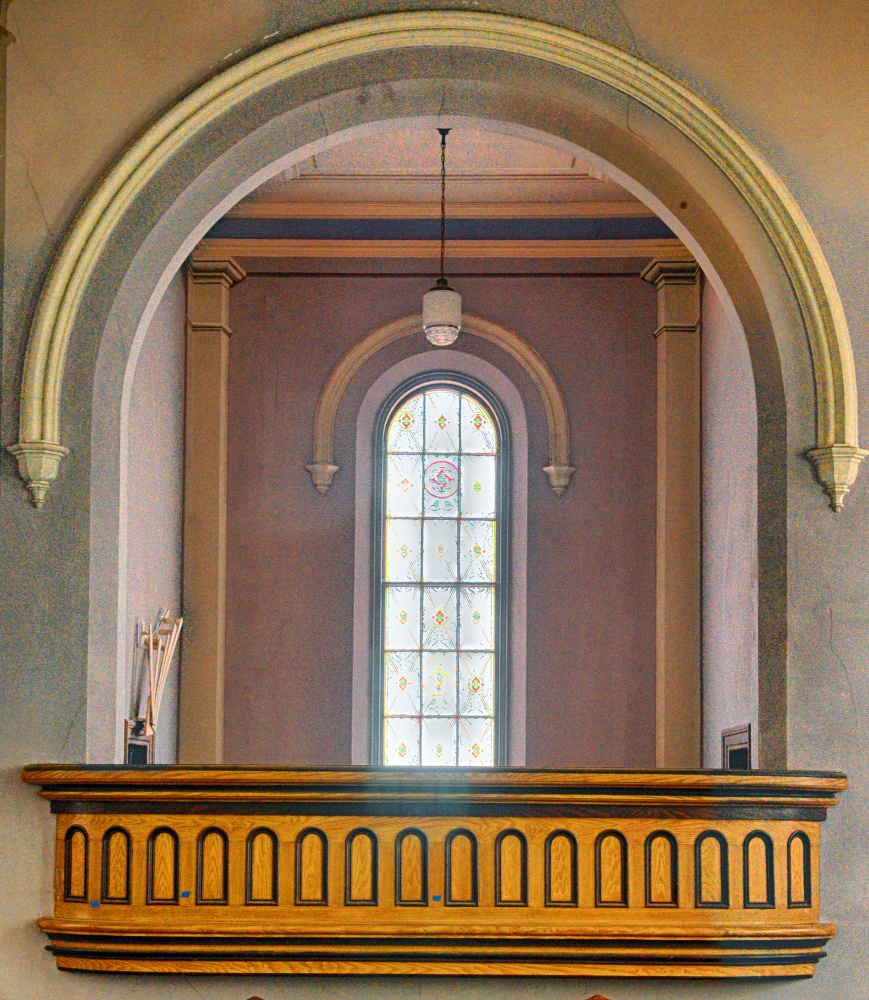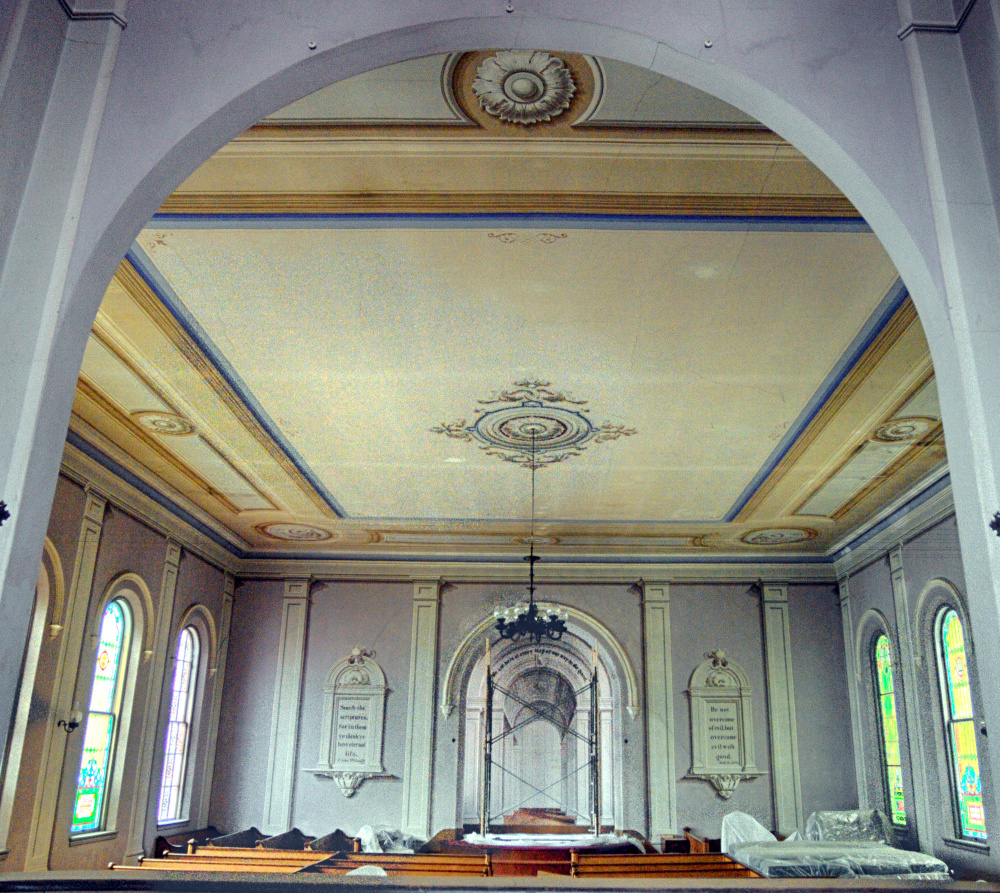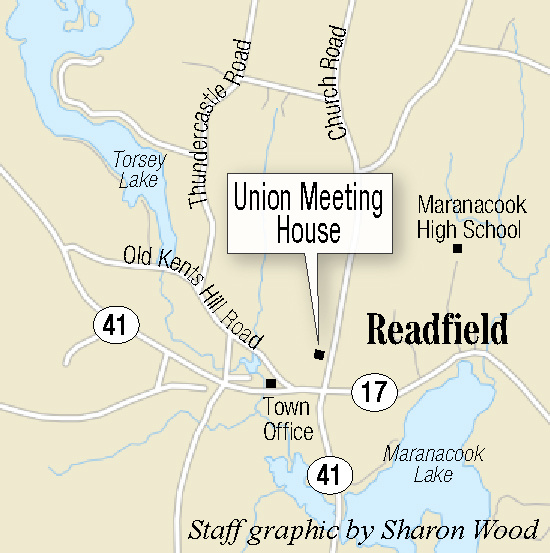READFIELD — The Readfield Union Meeting House, a red-brick building on the National Register of Historic Places, needs rehabilitation to remain standing.
So the board of the nonprofit, charitable organization working to save the building is now asking voters for a hand.
Board members collected more than 200 signatures of registered voters on a petition so they could ask voters for $5,000 on the ballot for the annual Town Meeting June 13.
The money would be used to leverage future grants for a total project that board members estimate at $245,000.
Nancy Durgin, who is on the board of the Union Meeting House, told those attending a recent selectmen’s meeting why the board is approaching the town now.
“We decided to ask because we’re wanting to show community support,” Durgin said. “In talking to banks and when you apply for grants, they ask, “What has the community done? Do they support that?” We’re feeling that it’s a fairly small amount.”
“It is probably the oldest historical building that’s standing in fairly good shape in this community,” she added. At one time it hosted various community gatherings, including some high school graduations through the 1960s, she said. “It’s a wonderful place that should not be allowed to fall into to disrepair.”
One claim to fame is the series of columns, plaques and medallions that appear three-dimensional but are in fact illusions created by the trompe l’oeil painting of Charles Schumacher in about 1868. One of the most elaborate paintings is in the 4-foot deep apse, where a series of receding columns offers the illusion that it goes on forever.
Union Meeting House Board president Marius Peladeau said an architect from Oslo, Norway, spent four hours viewing the interior of the Readfield building before continuing a tour that took him to New York and elsewhere.
“That’s how rare this is,” Peladeau said.
Moisture has rotted the underpinnings of the 1827-1828 structure erected initially as a multi-denominational place of worship — by a subscription of 42 members, according to information on the National Register of Historic Places — and more recently was home to the occasional concert, quilt show, lecture and wedding.
Durgin said the building could be used by townsfolk for the those same purposes again once some of the work is completed.
Standing in one of the rows of pews inside of the structure at 22 Church St. on a recent Friday, Peladeau said, “Now it looks like a construction project.”
Scaffolding stands near the apse — a semicircular, usually domed area where the altar would have been located — where plaster repairs were underway last fall. The pedal-powered organ and the pile of newer, foam-stuffed corduroy cushions for the butternut and black walnut pews are covered in sheets of heavy plastic, and plywood covers softer areas in the flooring.
The bathroom has been stripped and the water is turned off.
The winter brought many of the repairs to a halt, but they’re about to start again.
The current $110,000 project includes replacing more 7-by-10-inch beams in the crawl space. During a recent visit, John Perry, vice president of the board, held a cross section of the main support beam to underline the need for the work. More than 185 years of whitish mold covers the wooden beams in the crawl space.
“It’s just like you’d thrown chalk dust on everything,” Peladeau said.
The narthax beam that holds up the bell tower has been replaced, and now work turns to replacing smaller beams and joists that connect to those.
Flooring work so far — $135,000 — was paid by donations over the past five years or so and half by grants.
“We still lack more than half the remaining $110,000,” said Perry, who tracks the organization’s finances. Most of the grants require some match, of which the town funding could be part, as well as additional donations.
The Readfield Union Meeting House board of directors created a list of work done over the past 35 years which was supported both by community members, grants and donations.
Then there’s the current project and future work, as funding permits.
The later work envisioned includes installation of an underfloor humidity control system to protect the new supports, and removal of guano and insulation from the attic, repair work on the belfry and clock tower and re-installation of the bell, among a baker’s dozen chores.
Raising money to help restore the building is nothing new.
Along with seeking community support, grants and donations, the board arranges a series of community fund-raisers that also increase awareness of the historic building. The most recent was an international dinner held at Maranacook Community School. Photos from the event, plus photos of the Readfield Union Meeting House itself are posted on the organization’s Facebook page.
For the immediate future, the board members hope that enough of the current flooring project is completed to allow the interior to go on view as part of Readfield Heritage Days, set for Aug. 11-12.
Betty Adams — 621-5631
Twitter: @betadams
Send questions/comments to the editors.


